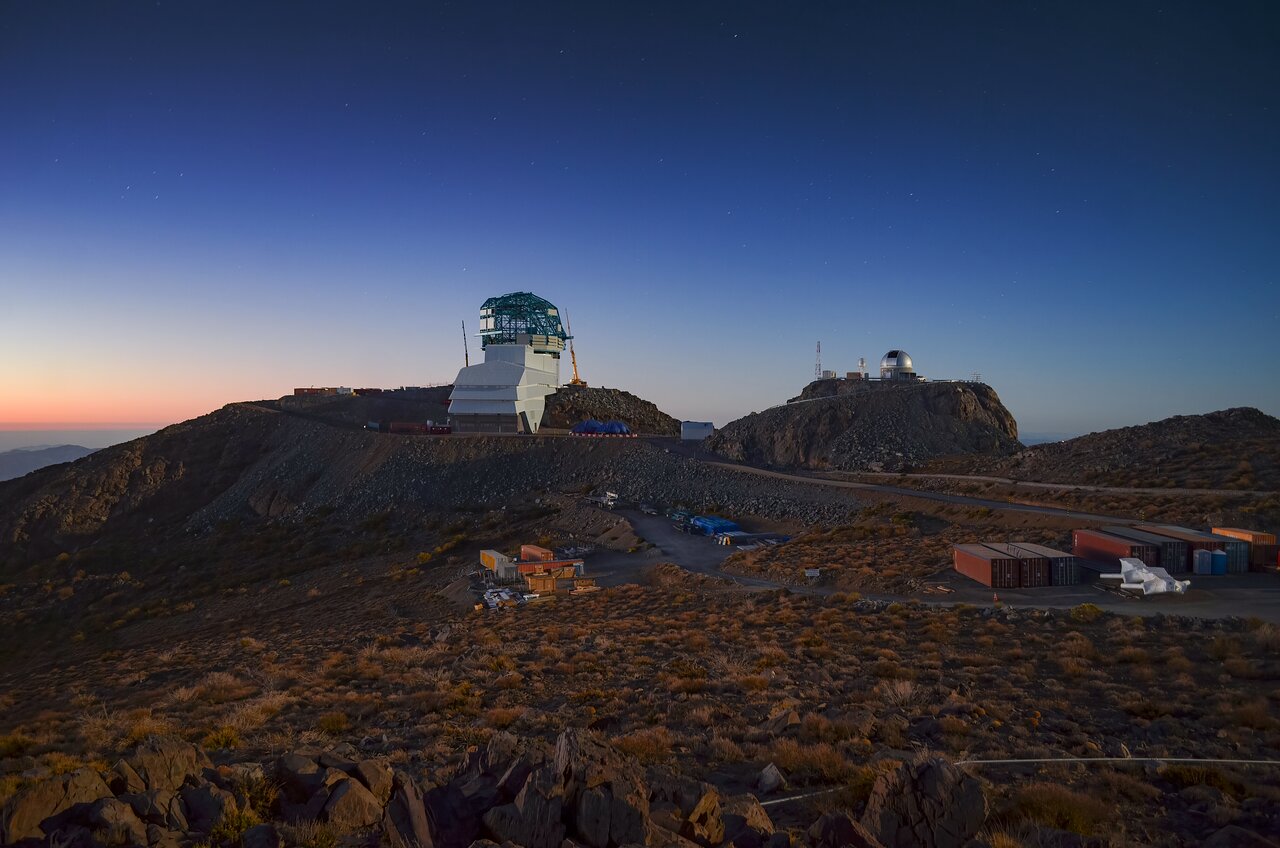Simonyi Survey Telescope
The goal of the Vera C. Rubin Observatory, currently under construction in Chile, is to conduct a 10-year optical survey of the visible sky that will deliver a 500 petabyte set of images and data products that will address some of the most pressing questions about the structure and evolution of the universe and the objects in it.
Rubin Observatory is a remarkable engineering and technical achievement, the result of many years of work by a diverse team of skilled experts in a variety of fields.
The 8.4-meter Simonyi Survey Telescope features a unique three-mirror design. This gives the telescope an exceptionally wide field of view, while maintaining a compact shape that allows it to move quickly across the sky. The design and construction of Rubin Observatory took more than a decade, with contributions from hundreds of individuals around the world.
The Simonyi Survey Telescope is named after Charles Simonyi's family, in recognition of his significant gift early in the construction phase in support of the design, development, and fabrication of the telescope’s primary mirror.
A team of engineers and technicians at SLAC National Accelerator Laboratory constructed the LSST Camera, the largest digital camera ever built for astronomy. The camera is roughly the size of a small car and weighs almost 6200 lbs (2800 kg).
The focal plane consists of 189 charge-coupled device (CCD) sensors arranged on 21 “rafts” for a combined 3200 megapixels.
Every night, Rubin Observatory’s intricate data network, designed and built by a distributed team of data management experts, will move 20 terabytes of data from the summit of Cerro Pachón in Chile to the US Data Facility and then to other data processing facilities around the world.
For scientists more details can be found on the Rubin Construction Project website.
Simonyi Survey Telescope
|
Please help us to complete this page by emailing information and corrections to info@noirlab.edu.
